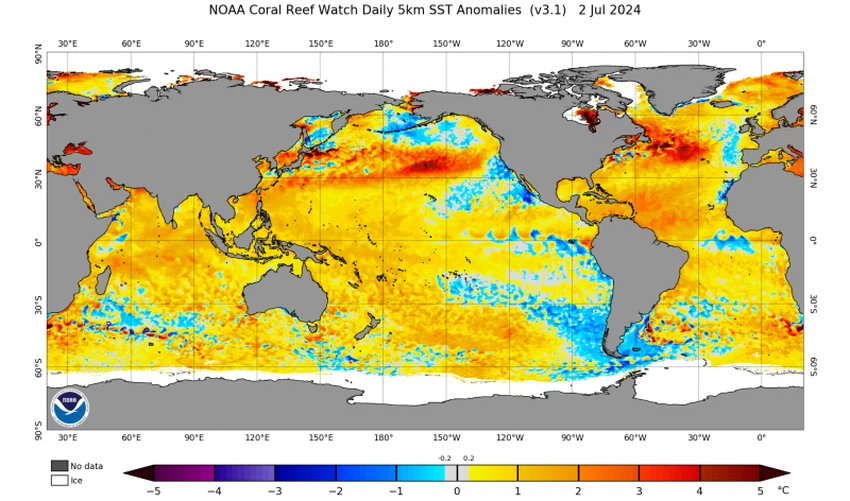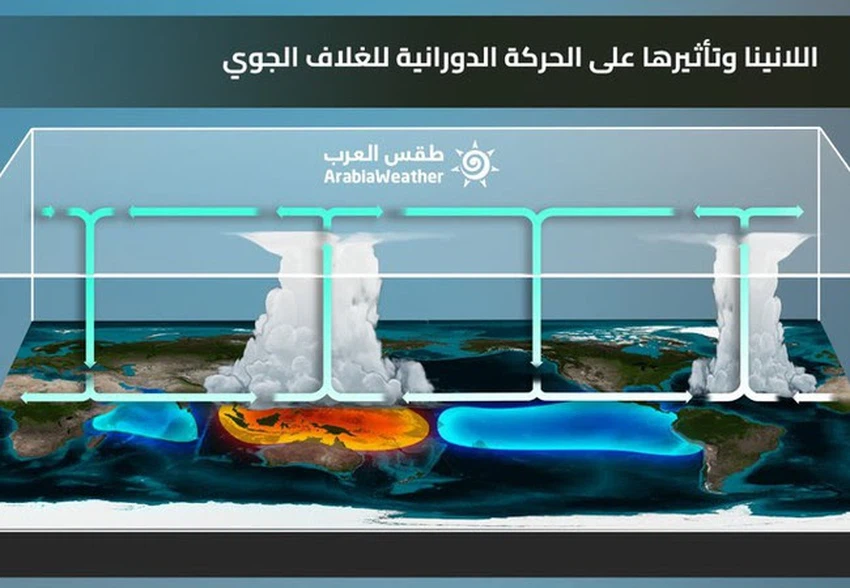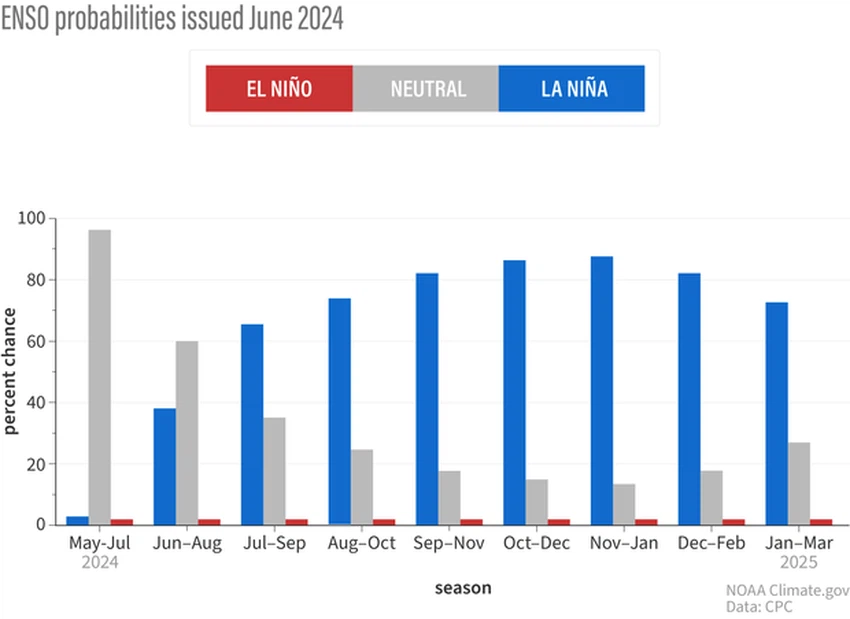Climate reading La Nina continues to grow and continue during the coming summer months. Does it herald a scorching summer on a global level?
Arabia Weather - After following up on the latest computer modeling outputs regarding the deviation of the temperature of water bodies from averages, the meteorological specialists in the climate department at the Arab Regional Weather Center said that the region located on the equator of the Pacific Ocean is witnessing a clear cooling of the water surface temperature, as it has decreased from its averages by an amount ranging Between one and two degrees since May, this means that there is a new climatic cycle prevailing in the waters of the Pacific Ocean, which is an increase in the (La Nina) climatic phenomenon that will continue with us during the coming months, including the summer months of this year.
The La Nina phenomenon continues during the summer months. Is it related to a hot summer globally?

According to climate research and forecasts issued by NOAA, the forecasting team believes that the La Nina phenomenon will continue during the months of June and August, and specialists in the climatic department of Arabia Weather said after conducting an extensive study that La Nina has a role in increasing the severity of heat waves in some regions around the world. It is a natural climatic phenomenon characterized by the abnormal coldness of the waters of the tropical Pacific Ocean. Although the effects of La Nina are diverse and complex and vary according to the geographical region, they may lead to an increase in the severity of heat waves in some areas, for example:
North America: La Nina can cause heat waves to become more severe in the southwestern regions of the United States.
Australia: La Nina is associated with stronger heatwaves and more severe droughts in the eastern part of Australia.
Scientifically: La Nina is associated with a higher-than-normal hurricane season in the Atlantic Ocean
Specialists at the Arabia Weather Center said that La Nina is statistically and climatically linked to a hurricane season that is stronger and more severe than usual as a result of the Atlantic Ocean due to the change that occurs in the movement of warm sea currents, which are considered the primary feeder and fuel for any tropical activity around the world.

Weather forecasters in ArabiaWeather said that the La Nina phenomenon has clear and obvious effects on the northern Indian Ocean as well, so that La Nina conditions work to increase the rush of the wet eastern tides coming, God willing, from the western Pacific Ocean, passing through the China Sea and reaching the Bay of Bengal, and also raise the surface temperature of the water in the area. The eastern part of the Indian Ocean, and these weather conditions provide a fertile and incubating environment for the emergence of tropical conditions in the Bay of Bengal.
The La Nina phenomenon will continue during the winter of 2024/2025, with a probability exceeding 80%, according to NOAA.
It is likely, God willing, according to the specialists at the Arabia Weather Center, that the La Nina phenomenon may continue during the upcoming fall and winter seasons of 202/2024 with a probability of up to 85%, according to the National Oceanic and Atmospheric Administration, but it cannot be certain that its effects will be inevitable in terms of its impact on the climate. The world, as all likely effects are the result of statistical processing of the years in which this phenomenon occurred, with the need to emphasize that these climate cycles are only an integral part of giant patterns that move global weather systems.
![]()
La Nina is statistically linked to the intensification of the Siberian Ridge in winter in the western Mediterranean and higher than average rainfall in the western Mediterranean.
Arab weather forecasters believe that the La Nina phenomenon is statistically linked to the intensification of the influence of the Siberian High on the Arabian Peninsula and the Levant during the winter season. The La Nina phenomenon affects the Arab region mostly with a lack of rain in the regions of the Arab Levant, but the opposite happens in the regions of the Maghreb, where rain increases and the temperature drops below its average. The chance of floods and torrents increases in the regions of the Maghreb, while the chance of drought increases in the regions of the Arab Levant as a result of the control of the Siberian high altitude.
Specialists pointed out that La Nina affects the pattern of air currents and global weather in multiple ways, which may lead to changes in temperature and precipitation in different regions of the world, but it cannot be certain that its effects will be inevitable in terms of its impact on the world’s climate, as all likely effects are the result of About statistical processing of the years in which this phenomenon occurred, with the need to emphasize that these climate cycles are only an integral part of giant patterns that drive global weather systems.
God knows.
Arabia Weather App
Download the app to receive weather notifications and more..




